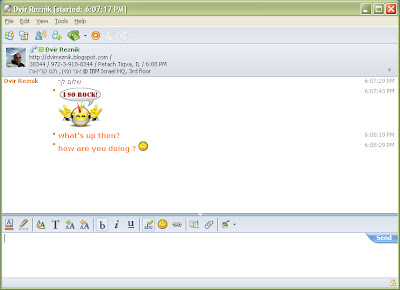Today I had the privilege of speaking at a management workshop of one of the largest banks in Israel. The workshop was held at the bank’s education center, 30min outside of Tel Aviv, with a beautiful view of the ocean. This was one of the cases that I came to lecture through the community. The management workshop was given by an outside consulting company, that heard me speak at a recent conference. Another proof of the power of social media.
I was told to present ‘the IBM story’ of E2.0 adoption (Web 2.0 goes to work), meaning what we’re doing, internally, to foster knowledge sharing and participation. I took couple of my presentations, consolidated slides, made some adjustments, added the IBM angle, and I was ready to go.
The population was mixed in age, all in managerial positions at the bank, youngest one in the room was me 🙂 Only when I asked people if they knew what twitter is, I realized that most people had no idea what Web 2.0 is all about, not to mention E2.0. That’s when I decided to skip some slides and explain over a whiteboard what we’re talking about…
I won’t tell the entire 90min presentation here, only summize with this:
At the beginning of my presentation a lady asked me what’s the benefit in all that user generated content (blogs, comments, wikis, articles, etc) if most of them are garbage (or below average), and why should any organization consider adopting such tools. At the end of the presentation, she asked me what’s the top 7 blogs to follow. And she’s also the one responsible for the title of this post. Folks, change is possible! even in a ‘traditional’ business as a bank.
As for the slides: I had to make some ad-hoc changes during the workshop, so the slides will be posted later this week.
BTW – if you haven’t subscribed to Jeremiah Owyang by now, shame on you!
His posts are right on the mark, and his knowledge in social media is infinite!
Only today we were talking at the workshop about FSS examples for social media (ROI/VOI), and there’s a list availble. We also talked about Gen Y and why they care if a bank has IM or a facebook thing, and here’s another post.
Subscribe. Now.



